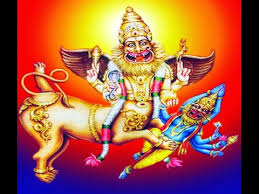Lord vishnu

Vasudeva is Maha Vishnu as Vyukam. He protects universe and all living things. Vibhavan is Avatars of Maha Vishnu. Lord Krishna is Avatar(Vibhavan) Lord Vishnu is one of the three main gods in Hinduism and the Absolute Supreme being in Vaishnava tradition. Vishnu is one of the Trimoortis in Hinduism. Vishnu is the preserver god, which means he protects the universe from being destroyed and keeps it going, according to this religion, and he has come to earth in nine forms (called avatars) so far, with one yet to come. His most famous forms are Rama and Krishna. Vishnu's wife is Lakshmi, the Hindu goddess of fortune. Vishnu is usually shown with light blue skin and four arms. He holds a lotus, mace (gada), conch {shankha) and disc (chakra) in each of four hands. He has famously taken many guises. These are the 10 Avatars of Vishnu (in the order they appeared): Matsya (Fish), Kurma (Turtle), Varaha (Boar), Narasimha, (half lion, half man), Vamana (Dwarf / Short m













